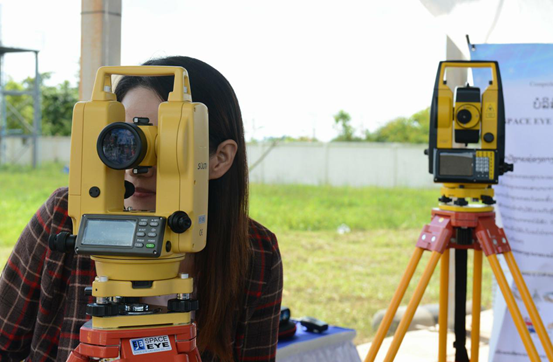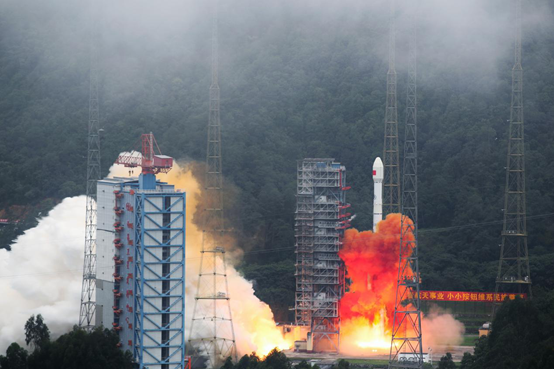

(Written by Xu Junhao / Translated by Zhang Xiaoyan)Out of the trillions of stars in the universe, the Big Dipper is the most shining one. Over the past 20 years, Chinese aerospace industry has been working hard on its own to deploy the outer space of China’s BeiDou. Now, the completed network deployment of the BeiDou Navigation Satellite System (BDS-3) not only makes China the third country in the world that owns an independent global navigation satellite system, but also offers a high-quality choice to countries all over the world for navigation and positioning services.
China’s BeiDou: higher precision to serve the world
On July 31, 2020, BDS-3 was officially launched to provide global services, which means that this satellite network composed of 30 satellites constructed by China independently becomes another system that can provide high-quality navigation and positioning services for the world after the GPS of the United States. Compared with the GPS and other satellite navigation systems, BeiDou system has its characteristics and advantages.

Unlike navigation systems such as the Americans’ GPS, the Russians’ GLONASS, and European Union’s Galileo that invariably use single orbit satellites to deploy their network, China’s BeiDou is unique for it adopts three kinds of orbit satellites to form a hybrid navigation network. The BDS-3 system consists of 3 tilted geosynchronous orbit satellites, 24 medium circle earth orbit satellites and 3 geosynchronous orbit satellites. Such network design integrates the advantages of different orbits, which not only achieves global coverage and global services, but also ensures higher precision positioning in the Asia-Pacific region or in special environments (such as inaccessible areas).
In addition to the basic timing and positioning functions of the navigation satellite system, BeiDou system can also provide the special service functions, such as short message communication, precise point positioning and satellite-based enhancement, which is of great values in special environments (ocean, desert, remote mountain, polar region), disaster relief and other conditions.
Although we may not know much about its technical sophistication, BeiDou system has been integrated into our daily life by providing us with well-known services. For example, the services of map navigation, bike-sharing and express mail checking that we use every day have long been inseparable from the signals provided by the BeiDou satellites. In addition, BeiDou system has a great role to play in agriculture, forestry, animal husbandry and fishery industry, transportation, hydrological monitoring, weather forecasting, geographic mapping, forest fire-prevention, power dispatching, emergency search and rescue and other fields.
Driven by key sectors such as transportation and bike-sharing, BeiDou application products have been widespread in use, with prices rapidly reduced. According to media reports, the unit price of BeiDou chips of the simplest positioning function has dropped greatly to RMB 6-10 yuan, and its performance has risen to or even higher than that of similar products in the world. Consequently, the competitiveness of BeiDou products has been significantly enhanced.
BeiDou expand cooperation to ASEAN
China’s BeiDou is also BeiDou of the world. In the process of raising BeiDou from a “regional satellite navigation system” to a global satellite navigation system, China has spared no effort to promote the “going global” of the BeiDou system. “BeiDou products have been exported to more than 120 countries and regions, providing services to more than 100 million users,” said Ran Chengqi, Deputy Chief Designer of BeiDou Satellite Navigation System and Director of China Satellite Navigation Office.
One of the preferred directions for China’s BeiDou system to “go global” is ASEAN, which, with a geographical environment similar to that of south China, are covered by the first phase project of the system. In addition, the precision of China’s BeiDou system is higher than that of the GPS in the Asia-Pacific region, especially in the ASEAN region, with better anti-interference capability as well. Therefore, ASEAN countries are very interested in carrying out technical cooperation with China on BeiDou.

With the BDS-2 in services for the Asia-Pacific region in 2012, Myanmar’s Ministry of Agriculture purchased some 500 high-precision BeiDou terminals from China in 2013, which marked the first time that BeiDou high-precision products were applied in agricultural data collection and precision land management.
“Compared with the manual mapping on the ground in the past, the clarity and authenticity of the maps made by satellite data are greatly improved. The data can also be directly imported into the software, which is convenient,” said the Administrative Commissioner of the Department of Agriculture Land Management and Statistics of Ministry of Agriculture of Myanmar.
After the purchase of the BeiDou equipment by the Ministry of Agriculture of Myanmar, many departments of the country, including the Ministry of Transport, made the same purchase and application. Ministry of Transport of Myanmar uses BeiDou equipment to survey and map the waterway and dam conditions of the Irrawaddy River to formulate a complete river protection plan; the vessel-mounted BeiDou terminal products provide various services for Myanmar fishery regulatory authorities and Myanmar fishermen, including vessel positioning supervision, fishing catch reporting and weather disaster notification. For years of application, the BeiDou equipment with its advanced nature has been well received by users in Myanmar.
The success of BeiDou products in Myanmar is an epitome of China’s BeiDou stepping into ASEAN. At present, the “circle of friends” of China’s BeiDou system covers at least eight ASEAN countries, including Indonesia, Malaysia, Singapore, Thailand, etc., where the BeiDou navigation system has been applied in various fields such as mapping, engineering construction, environmental monitoring, investigation and research, smart city construction, disaster prevention and relief, etc.
Apart from the ASEAN region, China is actively engaged in international cooperation with countries and regions along the Belt and Road, a China-sponsored program for win-win outcomes. It also shares with other countries the achievements of BeiDou development and promotes the BeiDou system to be actively incorporated into the international system and world industry standards. It works with the US GPS, the Russian GLONASS and European Union’s Galileo to provide better services to users around the world. With the completed deployment of the BDS-3 global navigation satellite system network, China’s BeiDou, which is active in the international arena, will be well known by more people.
More than product export
As a global public infrastructure, the BeiDou satellite navigation system sees its “going global” attempts not only the export of single products or parts, but also the exchange and cooperation in technology, services, talents, industry and other aspects.
Back in 2013, China’s Wuhan Optical Valley BeiDou Holding Group Co., Ltd., which is committed to promoting the “going global” of the BeiDou system, built the first batch of overseas ground-based augmentation system base stations (to assist the high-precision application of the BeiDou system) in Chonburi Province, Thailand, and also carried out the application system development and demonstration application of BeiDou intelligent transportation, marine fishing vessels and intelligent industrial park in Thailand. In 2015, the “China-ASEAN BeiDou Science and Technology City” jointly built by the company and Thailand has not only become a BeiDou application service platform for ASEAN, but also developed into a BeiDou industry development platform for ASEAN. Du Li, the then General Manager of Wuhan Optical Valley BeiDou, told that the company would continue to seek more international scientific and technological cooperation with ASEAN countries, which covers cooperative construction of base stations, joint technology research and development, joint product development, joint venture promotion and application, personnel training and exchanges, etc.

It is worth mentioning that China’s Guangxi Zhuang Autonomous Region, a bridgehead of China-ASEAN cooperation and a platform for the CAEXPO and the China-ASEAN Information Harbor in recent years, has played a significant role in deepening the China-ASEAN satellite navigation cooperation. Taking the implementation of Guangxi BeiDou Comprehensive Application Demonstration Project as an opportunity, Guangxi has carried out a series of programs such as BeiDou application promotion, technical exchanges, education and training for ASEAN countries, established the China-ASEAN satellite navigation international cooperation alliance, promoted the implementation of China-ASEAN BeiDou intelligent industrial parks, China-ASEAN BeiDou / GNSS (Nanning) center and other cooperation projects, effectively stimulating the development of the BeiDou system in ASEAN.
Now, with the BDS-3 global satellite navigation system formally commissioning, it becomes an irresistible trend that BeiDou system will “go global” in a wider range. However, we should also be fully aware that the future of the BeiDou system in its “going global” efforts will not be a smooth path, faced with the market competition of the existing satellite navigation system, the security considerations of partners themselves and the rise of anti-globalization in international trade. However, as the Chinese saying goes, strong grass survives wind force. With its inherent core high technology, wider application and competitive price edge, BeiDou will undoubtedly has more confidence and strength than ever in carrying out its “going global” ambition.
Source: China-ASEAN Panorama
桂ICP备14000177号 Copyright@2006-2013 Guangxi China-ASEAN Panorama Magazine Agency Co., Ltd. All Rights Reserved